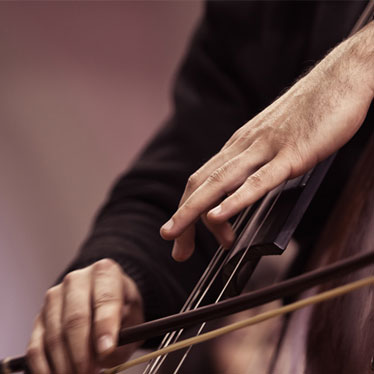5 Ways To Improve The Tone of Your String Bass

Knowing the notes and playing them accurately, and in tune, is one thing. However, the quality of your tone has a marked effect on how a piece sounds and feels to the audience. If your tone is flat or lacks the rich, resonance double basses are known for, it will directly affect your inspiration and joy of playing, not to mention your performances.
Here are five suggestions for improving the tone of your string bass.
1. Correct your posture
Nicholas (Nick) Hart, string bass student at the Cincinnati College Conservatory of Music, was admitted at the young age of 15, after attending Julliard. In a guest post for doublebassblog.org, Nick discusses how posture affects the sound. "Good posture creates good balance, and balance is the key to good intonation." He goes on to explain how standing (or sitting) tall, expanding the abdomen, rib cage and chest, affects the way the shoulders, arms, hands and fingers approach the bass – as well as your bowing.
"Clarity is probably the most important aspect of bass playing," Hart continues. "If we cannot produce a clear sound, it would not matter how in tune or in time we play, because it cannot be heard. After opening up my posture, I was able to improve the clarity of my sound by using my body as a whole."
Work with your instructor(s) and a mirror and focus on correct posture. Read Strength Exercises for Cellists and Bassists for further tips on improving posture and stamina.
2. Evaluate your bowing technique
Bowing technique is crucial to desirable intonation. Any mishap that occurs between the bow and the strings will show-up as reduced tone quality. Work carefully on your bowing technique, which includes having a relaxed grip with the correct balance maintained between the frog and the stick. It also entails how much weight, pressure, etc., is exerted as you bow the strings.
Improving bowing technique automatically enhances tone. Get feedback from third-parties (your instructor, conductor, first-chair bass, etc.) and take their feedback home with you when you practice. Recording yourself on video and playing it back is a great way to get a more objective view of your posture and bowing technique - in a way you can't see while looking in a mirror or feeling from within your body.
3. Avoid excess rosin
Excess rosin on the bow and/or strings is typically a sign of a new student (applying rosin is so fun and official!) or a lazy student who isn't cleaning up after him/herself as they should.
Too much rosin has an undesirable effect on bowing and tone. It creates a sticky string surface, leading to uneven bowing and can cause a scratchy sound. It also makes it more difficult for you to achieve the feeling of smooth, graceful bowing.
Cultivate the following "healthy" rosin habits:
- Use a high-quality, bass-specific rosin (read Choosing a Rosin That's Good For You). Never use rosin for violin, viola or cello.
- Always wipe your strings and the instrument body with a clean cloth after each time you play, preventing rosin build-up on the strings and the finish.
- Only swipe your bow three or four times through the rosin. More than that is probably overkill and leads to over-rosining.
If you suspect your strings or bow have rosin overwhelm, use a clean cloth with a small amount of rubbing alcohol (only enough to make it damp) and wipe down the strings. Most of the time, playing without rosin for a while removes excess rosin from bow hairs. If not, use a soft toothbrush and gently clean the bow hairs.
4. Bow one string at a time
It's very common for beginning bass players to hit, bump or brush an adjacent string when bowing, and this convolutes the tone. Again, improving your bow hold and bowing technique will reduce the chances of this, but it's also a muscle memory thing– so don't brush off those "occasional" strokes or glances off adjacent strings. Regular and attentive bass practice makes for better muscle memory.
5. Invest in a better instrument
Perhaps you've been playing your first bass for so long you forgot there were options? Have you grown? It could be the wrong size, which has a negative impact on posture and tone. It might be time to upgrade. Again, input from your bass teacher is a helpful reference as you decide how much to invest in a new instrument. However, that one change can have a remarkable effect on your sound – not to mention ease of playing.
You're typically ready for an upgrade when:
- You advance from beginning- to intermediate- or advanced-intermediate
- You've outgrown the bass
- Tone and/or sound suffers regardless of the changes you've made
- Your instructor or conductor recommends it


